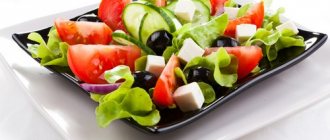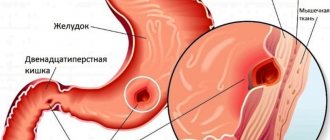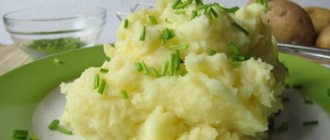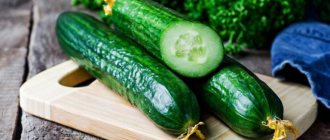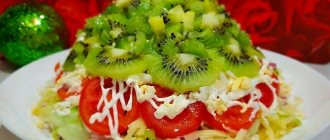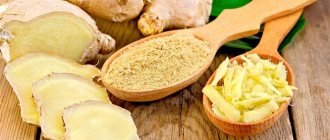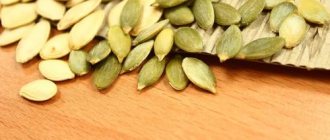Gastritis is a common disease. A pathological process manifests itself in inflammation of the gastric mucosa. The clinical picture of the disease is expressed in the form of abdominal pain, belching, heartburn, bloating and bowel dysfunction. In addition to drug treatment, patients are prescribed a gentle diet.
Medicines will not have a beneficial effect on the gastric mucosa if you neglect proper nutrition for gastritis. It is important to sort foods that are acceptable during the inflammatory process in the digestive tract from foods that are undesirable. Fans of Japanese dishes suffering from gastritis often turn to a gastroenterologist with the question of whether sushi is allowed for gastritis. Let's take a closer look at the answer.
What is contained in sushi and rolls
To understand whether rolls can be used for gastritis, it is enough to study the effect of individual components of the dish on the body. To prepare such a delicacy in Japanese cuisine, rice, a variety of seafood, and fresh fish are often used.
For those who do not suffer from various diseases of the digestive system, these products are useful. After all, seafood is rich in iodine, vitamins and microelements. In addition, they contain proteins and unsaturated fatty acids. The components improve the condition of the skin, the functioning of the nervous and endocrine systems. At the same time, some ingredients of sushi and rolls have antibacterial, anti-inflammatory and antioxidant properties.
But is it possible to have rolls for gastritis, if they are so healthy? It is worth considering that some components of these dishes are strictly prohibited for this disease. Another drawback of rolls and sushi is the parasites contained in raw fish.
Dangers of eating raw fish
Firstly, you need to take into account that raw fish may contain larvae of parasites - helminths, and the fresher the product, the higher the danger. To prevent a parasite from 8 to 12 meters long from invading your intestines, the fish must be deep-frozen.
According to sanitary rules, in order for all parasites to die, the fish should be kept for at least 7 days at a temperature of -18-20 degrees Celsius. Oddly enough, in Japan the danger of becoming infected with helminths is higher than here, since in Ukraine almost all the fish that goes on the shelves comes frozen, and in the Land of the Setting Sun you can also run into the freshest fish - just caught in the sea. It is no coincidence that all freezers have a minimum temperature of -18 °C.
In order for the fish to retain its taste and nutrients and at the same time not to contain pathogenic bacteria (salmonella, E. coli, other infections), it must be thawed and processed in strict accordance with sanitary and hygienic requirements. It depends on the conditions in which the fish was stored, and then defrosted and cooked, whether you will receive harm from its consumption or exclusively benefit.
In those cafes that adhere to high standards of preparation, it is mandatory to store product quality certificates; you can easily find out when, who and where it was brought from, how much time has elapsed since defrosting, etc.
On the one hand, it’s good that the number of sushi bars has increased, and this exotic food has ceased to be exotic. On the other hand, cheapness raises doubts about the high quality of the product.
In addition to the danger of getting infected with worms or poisoning due to violation of fish storage conditions, there is another danger for consumers of sushi rolls: the fact is that the meat of tuna and other marine life contains a high concentration of mercury and heavy metals. Therefore, abuse of these products can also cause chemical poisoning.
Main ingredient: seafood
Is it possible to eat rolls and sushi that contain seafood if you have gastritis? The answer to the question posed will be negative. As a rule, fatty varieties of sea fish are used to prepare such a dish, for example, tuna, salmon, trout, cod, and salmon. A canned product, which contains various additives and spices, is also possible. For gastritis with high acidity, such components are contraindicated.
The diet allows you to eat only baked, steamed or boiled sea fish of low-fat varieties. High-calorie and salty foods can lead to exacerbation of the disease. This applies not only to fish, but also to other seafood: shrimp, eel, and so on.
In addition, a product that has not undergone heat treatment is added to rolls and sushi. Raw seafood is much more difficult for the stomach to digest.
Products used to prepare Japanese dishes
Traditional sushi components are:
- sumeshi rice (white short-grain rice mixed with a special sauce based on rice vinegar);
- filling (various types of fish, shrimp, caviar and similar seafood, vegetables, cheese, eggs, Japanese mayonnaise, etc.).
If we are talking about rolls (the most popular type of sushi), then an obligatory component is nori (seaweed pressed into a thin sheet). Traditionally, sushi is eaten along with the following additives:
- Wasabi.
- Soy sauce.
- Gari (pickled ginger).
All of the listed products have an effect on the course of gastritis. But what is it - positive or negative?
Gastritis and seaweed
Sushi and rolls for gastritis can be allowed if they are prepared correctly. Among the main components it is worth highlighting seaweed. This product is approved for patients with high acidity. The component has a laxative effect. Eating seaweed is important for constipation.
In addition, such a product is able to remove toxic compounds and radionuclides from the body. Therefore, it should be used for tissue inflammation caused by poisoning with salts of heavy metals and radioactive substances.
Why is white rice dangerous?
The basis of both sushi and rolls is white rice. However, keep in mind that white rice has a high glycemic index and is also high in calories.
So, if you switched to sushi in order to lose weight, you will not succeed, because after consuming a product with a high glycemic index, your blood sugar level sharply rises, which contributes to the body storing fat “in reserve.”
Therefore, for those who want to lose excess weight, it is advisable to refrain from white rice, especially if the rolls contain Philadelphia cheese, since it is high in fat.
Rice and soy sauce
Is it possible to have rolls and sushi made from rice if you have gastritis? This cereal can improve all digestive processes in the body. In addition, rice is rich in fiber. It is well absorbed and does not cause exacerbation of the disease. Therefore, this component can be included in the recipe.
As for soy sauce, it's worth staying away from. For gastritis, sushi and rolls can only be consumed with soft sour cream dressings. Soy sauce has a negative effect on the gastric mucosa, causing irritation. In addition, the product contains toxic compounds and heavy metal salts. It is prohibited to eat it if you have gastritis.
Homemade diet roll recipes
Below are recipes for rolls that are easy to prepare yourself at home.
Vegetable rolls
Let's look at how rolls with vegetable filling are prepared. This dish can be eaten in small quantities for gastritis. To prepare diet rolls you will need the following ingredients:
- medium-sized fresh cucumber;
- bell pepper;
- lettuce leaves;
- 120 grams of boiled rice;
- 3 plates of nori;
- avocado.
To prepare the dish, you will need a special bamboo mat or 4 sheets of foil folded together. Let's get straight to cooking.
A sheet of nori is laid out on a mat or foil. Pre-cooked rice is placed on top. The filling components are cut into thin strips and laid out on rice. The nori sheet is wrapped in the shape of a sausage and placed in the refrigerator for 10 minutes. The finished product is cut into 1 cm pieces and served without hot seasonings.
Diet roll recipe option
It is strictly not recommended to consume fresh fish and seafood for gastritis; they are replaced with gentle ingredients. Eating raw fish has an adverse effect on the condition of the gastric mucosa and creates unnecessary stress on the already irritated mucosa.
To fill the rolls, it is allowed to use products that do not irritate the stomach and are eaten for gastritis.
- fresh cucumbers (before cooking, peel the vegetables);
- hard-boiled chicken eggs;
- green salad leaves;
- boiled lean chicken fillet;
- low-fat varieties of hard cheeses.
To prepare the rolls, you can use the components of a vegetable casserole or an omelette cut into thin strips.
As you can see from the recipes above, even with gastritis you can diversify your diet and enjoy your favorite dish.
Wasabi and additives
Wasabi is often called Japanese horseradish. This seasoning is very spicy. For gastritis, foods containing large amounts of spices are prohibited. You will have to give up wasabi.
As for greens, they are allowed for gastritis. However, it is recommended to use it during remission.
With this disease, it is not recommended to get carried away with all kinds of additives that can improve the taste of the dish. These products include salt, sugar, and rice vinegar. If the gastric mucosa is inflamed, you should avoid them. In addition, such products can provoke an exacerbation of gastritis.
Sumeshi rice for gastritis
Sumeshi rice is nothing more than grains that have been thoroughly washed and boiled in a minimum amount of water with the addition of salt, sugar and special vinegar. At first glance, it seems that this is not the most successful mixture for gastritis, especially because of the last ingredient, but in fact this is not the case. The fact is that to prepare this rice, not ordinary vinegar is used, but rice “su”. It is not only not dangerous, but is even beneficial for the stomach with gastritis.
Dishes with the addition of “su” (rice) vinegar are useful for gastritis:
- due to its high content of amino acids, which are involved in tissue regeneration, including the gastric mucosa;
- due to the ability of vinegar to facilitate the digestion of any food (both protein and rich in carbohydrates and fats);
- “su” is an element in the prevention of obesity, which can complicate the situation (rice vinegar can significantly reduce the calorie content of dishes).
All beneficial properties are inherent only in real rice vinegar obtained by fermentation. “Su” from unscrupulous manufacturers is a mixture of harmful chemicals that will only undermine the already poor health of the stomach due to gastritis. Buy only a high quality product!
Vegetables and fruits included in rolls and sushi
Most often, avocado or cucumber is added to rolls. There are also some nuances here. Cucumber rolls are prohibited for gastritis, as this component requires a large amount of gastric juice for digestion. An increase in the concentration of hydrochloric acid can lead to exacerbation of peptic ulcers and gastritis.
As for avocados, this product can destroy Helicobacter bacteria. They are the ones who provoke the development of such a disease as gastritis. Therefore, avocado can be used when preparing rolls and sushi.
What is the danger of wasabi
As we have already said, wasabi is useful only if it is prepared from native raw materials - the herbaceous plant Eutrema, which belongs to the Brassica family, and is indeed a distant relative of horseradish
As we have already said, wasabi is useful only if it is prepared from native raw materials - the herbaceous plant Eutrema, which belongs to the Brassica family, and is indeed a distant relative of horseradish. However, it is not horseradish as such, and is quite expensive.
Therefore, our craftsmen have learned to make this sauce from Ukrainian horseradish, and the color, smell and desired consistency are given to “wasabi” by dyes, thickeners and taste substitutes, as they say, “identical to natural”. Doctors state: such a replacement is inadequate and can lead to further tragic consequences in the form of poisoning, especially if they are abused.
When can you eat sushi?
Is it possible to eat sushi and rolls for gastritis if the disease is in acute form? In this case, you should refuse the treat. Sushi and rolls can be consumed during remission in small quantities, as well as in the absence of clinical manifestations of the disease.
Despite this, the dish should not contain components that can irritate the gastric mucosa and aggravate the patient’s condition. You should also avoid fatty fish, spicy seasonings, and sauces. It is better to give preference to a vegetable dish, without any additives or wasabi.
Nori for gastritis
Nori is nothing more than seaweed pressed into a thick sheet, in which rolls are wrapped. This product contains a lot of useful substances: vitamins, microelements, and even protein. But at the same time, they contain a fairly large amount of fiber, which can cause heartburn, bloating and other unpleasant phenomena. In addition, it can cause irritation of the stomach walls, which is extremely undesirable for patients with gastritis.
The use of this product in patients is possible only during a period of long-term remission and in small quantities. At the first symptoms of deterioration, stop eating nori.
If the diet has been broken
In some cases, it is very difficult to resist temptation. If after eating sushi or rolls the patient’s health worsens, you should immediately seek help from specialists. Symptoms of exacerbation include:
- heartburn;
- attack of nausea/vomiting;
- bursting, aching, acute pain in the stomach;
- belching with an unpleasant sour taste;
- intestinal upset and loose stools.
If there are signs of exacerbation of gastritis, you should call a medical ambulance. Before the specialists arrive, you can take sorbents. These medications help eliminate intoxication and cleanse the gastric mucosa of undigested food residues.
Authorized Products
If you have a peptic ulcer, you should never go hungry, otherwise the stomach begins to digest its walls, which can lead to complications and worsening of the patient’s condition. The ideal interval between meals is 3 hours. During breaks, drink plenty of clean and alkaline water, anti-inflammatory herbal infusions (chamomile, St. John's wort, sage, linden).
List of permitted products:
- Wheat bread (yesterday's).
- Meat soups with secondary broth.
- Biscuit.
- Baked goods made from unleavened (yeast-free) dough filled with lean meat, cottage cheese, fish, and apples.
- Milk and cereal soups.
- Non-fatty fish (boiled or steamed, in foil).
- Main courses from dietary varieties of meat without veins: turkey, beef, chicken, rabbit. It is best to cook by steaming, no frying. The priority is soufflé, meatballs, zrazy, meatballs, cutlets.
- Scrambled eggs.
- Dairy products with a small percentage of fat content: sour cream, yogurt, fermented baked milk, milk, cottage cheese, unleavened cheeses.
- Porridge: oatmeal, semolina, buckwheat, rice. In addition, boiled pasta is beneficial.
- Natural honey, marshmallows, marshmallows, marmalade, jelly, mousses.
- Baked apples and pears, fresh sweet berries and fruits, crushed to puree.
- Vegetable oil (sunflower or unrefined olive), in moderation.
- For dressing dishes, give preference to white milk sauce.
- Drinks allowed are compotes, weakly brewed teas, freshly pressed sweet juices diluted with water by 50%, decoctions of wheat bran and rose hips.
According to medical research, in 90% of cases, stomach ulcers develop due to colonization of the bacterium Helicobacter Pylori. Therefore, to treat acute attacks of the disease, along with antibiotics, products and agents with bactericidal properties (honey, cauliflower, white cabbage, broccoli) are used. If you have a stomach ulcer, any vegetables in your diet should be heat treated so as not to worsen the patient’s condition. It all depends on the individual characteristics of the body: the aggressiveness of the gastric environment.
What medications will help?
If there are signs of exacerbation of gastritis after eating a Japanese dish, you can take:
- Sorbent. Among such drugs, such drugs as “Sorbex”, “Smecta”, “Enterosgel” are in particular demand.
- To eliminate pain, it is better to take Papaverine, Drotaverine or No-shpa.
- Medicines such as Rennie, Maalox, and Almagel will help improve the condition and suppress attacks of heartburn.
You should not eat sushi and rolls in combination with alcohol. This is strictly prohibited, as an exacerbation of gastritis may immediately begin. This increases the risk of ulcers forming on the surface of the mucous membrane. Such a pathological process often leads to sepsis or peritonitis.
Golden rules of nutrition for ulcers
Food should be varied
A diet for ulcers is followed for three reasons:
- it neutralizes the increased acidity of gastric juice
- reduces its increased secretion
- fully provides the body with the necessary amount of nutrients
There are two main rules for a diet for ulcers. First, you should eat carefully, and the portions of food you eat should not be large. Under no circumstances can it be transferred. And the second rule is to switch to a vegetarian diet, which reduces various inflammations that accompany periods of exacerbation of the disease. Recommendations that, if followed, will have a positive effect on the patient’s condition:
Menu for a week during an exacerbation of a stomach ulcer
To stop an attack, the patient’s diet consists exclusively of pureed boiled dishes without the addition of spices, in a liquid, mushy form. The frequency of meals is 6–7 times a day, the size of one serving is up to 150 grams. Dishes are consumed exclusively warm; they should not be cold or hot.
Day No. 1
- 8.00 – boiled buckwheat;
- 10.30 – puree from boiled vegetables (broccoli and carrots);
- 13.00 – turkey soufflé, slimy oatmeal soup;
- 15.30 – soft-boiled egg;
- 18.00 – boiled rice porridge;
- 20.30 – cottage cheese soufflé.
Day No. 2
- 8.00 – oatmeal, dried biscuit;
- 10.30 – steamed omelette;
- 13.00 – boiled fish fillet, grated beets;
- 15.30 – slimy green buckwheat soup;
- 18.00 – strawberry jelly;
- 20.30 – semolina porridge.
Day No. 3
- 8.00 – rice porridge;
- 10.30 – boiled veal (pureeed), boiled beets;
- 13.00 – cottage cheese casserole;
- 15.30 – soup with barley (slimy);
- 18.00 – oatmeal cooked in water;
- 20.30 – pureed boiled apples (without seeds, peel).
Day No. 4
- 8.00 – boiled rice;
- 10.30 – soft-boiled egg;
- 13.00 – minced chicken meatballs, slimy oatmeal soup;
- 15.30 – buckwheat porridge;
- 18.00 – puree soup from boiled vegetables (carrots, beets, kohlrabi);
- 20.30 – peach mousse.
Day No. 5
- 8.00 – slimy green buckwheat;
- 10.30 – pear jelly, without added sugar;
- 13.00 – oatmeal;
- 15.30 – boiled zucchini, steamed turkey;
- 18.00 – milk jelly;
- 20.30 – sugared rosehip infusion.
Day No. 6
- 8.00 – rice porridge;
- 10.30 – apple and pear puree from boiled fruits without peels or seeds;
- 13.00 – boiled fish (hake), boiled carrots;
- 15.30 – boiled beets, grated;
- 18.00 – barley soup (slimy);
- 20.30 – milk jelly.
Day No. 7
- 8.00 – semolina porridge;
- 10.30 – steamed omelette;
- 13.00 – rabbit soufflé, slimy rice soup;
- 15.30 – vegetable puree from boiled pumpkin and zucchini;
- 18.00 – baked cottage cheese with honey;
- 20.30 – milk jelly.
Subsequently, when the attack of the disease passes, you can expand the menu, introduce new products, move from dietary menu No. 1a to table No. 1 or No. 5.
